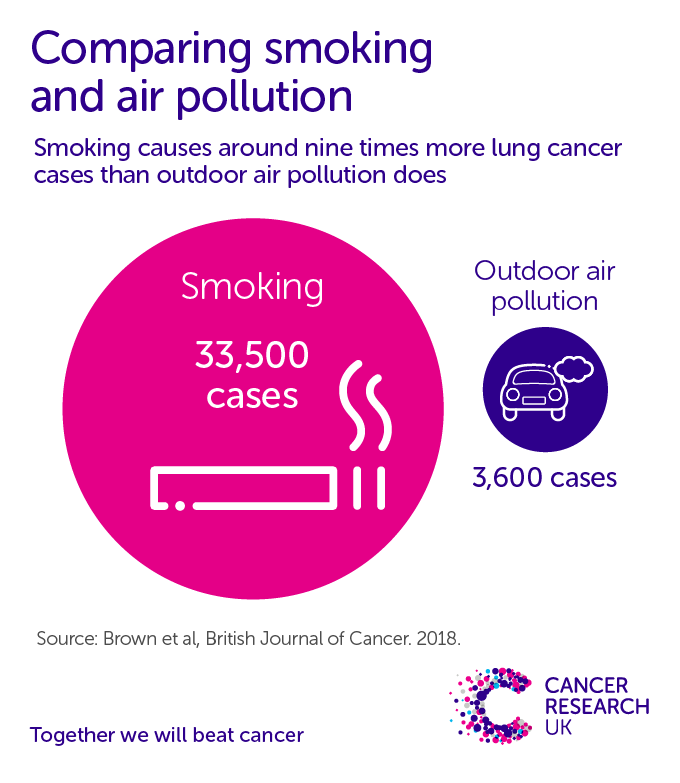Indoor air pollution can cause lung cancer, leading to serious health risks. Poor indoor air quality is linked to respiratory tract infections, asthma, and chronic obstructive pulmonary diseases.
Exposure to indoor pollutants, such as radon, can increase the likelihood of developing lung cancer, especially among individuals with pre-existing lung conditions. Air pollution, both indoor and outdoor, poses a significant threat to lung health by increasing the risk of respiratory diseases and heart conditions.
Understanding the negative impact of indoor air pollution on lung health is crucial for promoting clean and healthy indoor environments. Take proactive measures to improve indoor air quality to reduce the risk of lung cancer and other respiratory illnesses.

Credit: www.sciencedirect.com
Understanding Indoor Air Pollution
Indoor air pollution is linked to lung cancer and can pose serious health risks. Pollutants such as radon and chemical fumes increase the risk of developing lung cancer. Understanding the impact of poor air quality on lung health is crucial for minimizing these risks.
| What is indoor air pollution? | Indoor air pollution includes various harmful substances like radon, cigarette smoke, and chemicals from household products. |
| Sources of indoor air pollution | Main sources include cooking, cleaning products, pet dander, and pollutants from outside entering the home. |
The Link Between Indoor Air Pollution And Lung Cancer
Indoor air pollution has been linked to an increased risk of lung cancer. Studies have shown that exposure to pollutants such as radon, tobacco smoke, and household chemicals can contribute to the development of lung cancer. It is important to maintain good indoor air quality to reduce the risk.
| The Link Between Indoor Air Pollution and Lung Cancer |
|---|
| Indoor air pollution contributes to lung cancer by impairing lung development, increasing respiratory infections, and elevating risks of asthma and COPD. Radon is a significant indoor pollutant linked to lung cancer, while poor indoor air quality can cause infections and exacerbate lung diseases such as asthma. Both indoor and outdoor air pollution heighten the risk of lung cancer, respiratory, and heart diseases. Studies show increased lung cancer risk associated with exposure to traffic-related PM in indoor environments. Controlling indoor air pollution is crucial for protecting lung health and reducing lung cancer risks. |
Other Health Risks Associated With Indoor Air Pollution
|
Poor indoor air quality can lead to various health risks, including respiratory diseases and an increased risk of infections. Indoor air pollution has been associated with impaired lung development, making individuals more vulnerable to respiratory tract infections. Additionally, exposure to indoor pollutants can contribute to the prevalence of and morbidity attributable to asthma and chronic obstructive pulmonary disease. Those who already have lung diseases are at a greater risk. In terms of specific health risks, indoor air pollution is a leading cause of lung cancer, second only to radon gas exposure. It is important to note that both outdoor and indoor air pollution can increase the risk of lung cancer, as well as respiratory and heart diseases. |

Credit: www.mdpi.com
Preventing Indoor Air Pollution
Preventing Indoor Air Pollution:
Improving ventilation and reducing exposure to pollutants are crucial in preventing indoor air pollution. Proper ventilation helps to circulate fresh air and remove indoor contaminants. Using air purifiers and filters can also aid in reducing pollutants such as dust, allergens, and chemicals. Additionally, controlling sources of pollution, such as tobacco smoke and harmful chemicals, is essential for maintaining clean indoor air.

Credit: www.cancerresearchuk.org
Frequently Asked Questions Of Does Indoor Air Pollution Causes Lung Cancer?
How Harmful Is Indoor Air Pollution?
Indoor air pollution can harm your health by impairing lung development, increasing infection risk, and worsening respiratory conditions like asthma and COPD.
How Does Indoor Air Pollution Affect Lung Health?
Indoor air pollution can harm lung health by impeding lung development, increasing infection risk, and exacerbating asthma and COPD.
Which Indoor Air Pollutant Is The Second Leading Cause Of Lung Cancer?
Radon gas is the second leading cause of lung cancer among indoor air pollutants.
Which Air Pollution Can Cause Cancer In Humans?
Indoor air pollution, such as radon, can cause lung cancer in humans. Outdoor and indoor air pollution increases the risk of respiratory and heart diseases.
Conclusion
Indoor air pollution is a significant risk factor for lung cancer. It can lead to impaired lung development, respiratory tract infections, and an increased prevalence of asthma and chronic obstructive pulmonary disease. Poor indoor air quality, caused by various pollutants, can contribute to the development of lung cancer and other chronic lung diseases.
Therefore, it is crucial to take measures to improve indoor air quality and reduce exposure to harmful pollutants to protect our lung health.
Rakib Sarwar is a Registered Pharmacist and a reputed health and wellness blogger. He has a great interest in Air purifiers.
